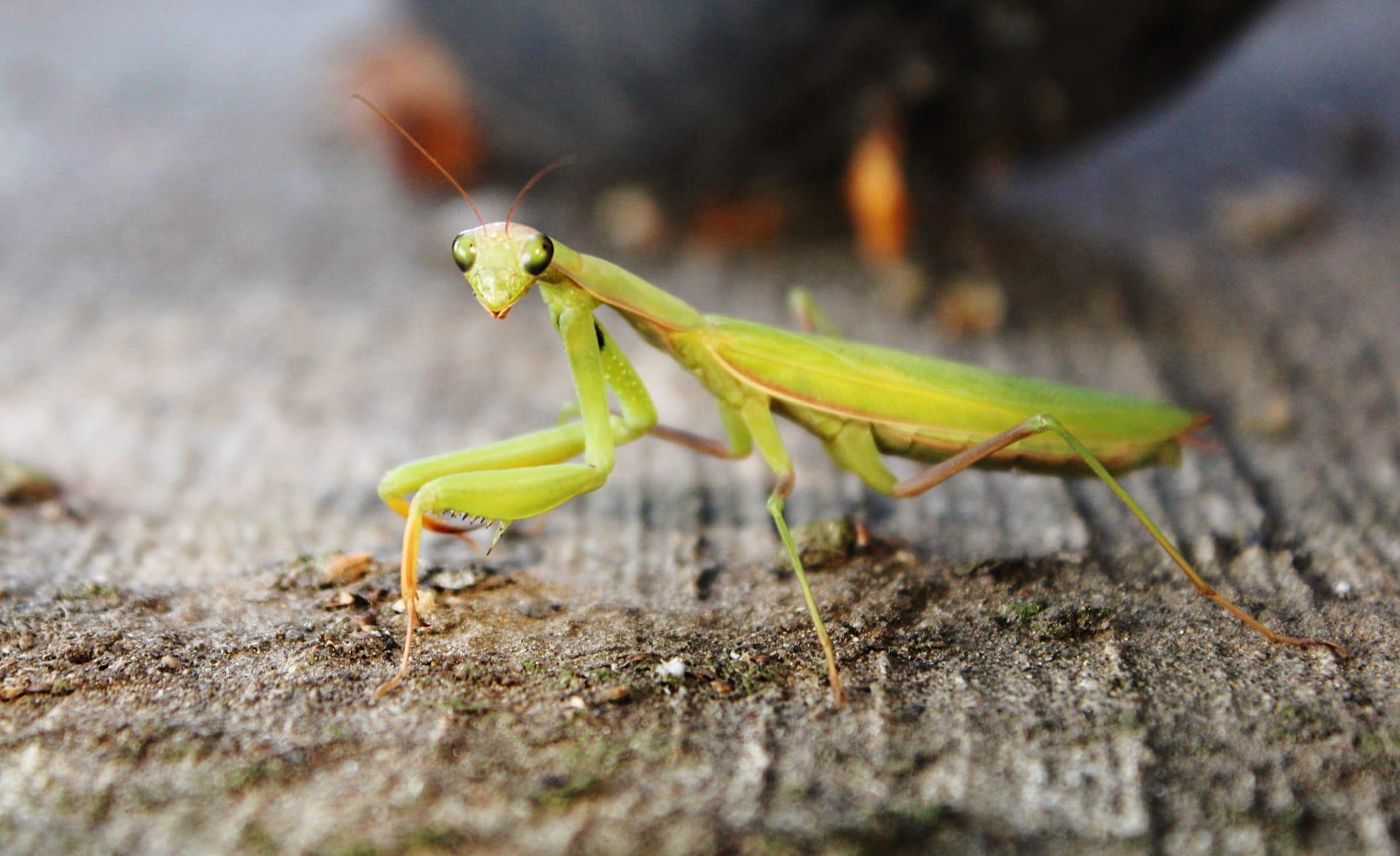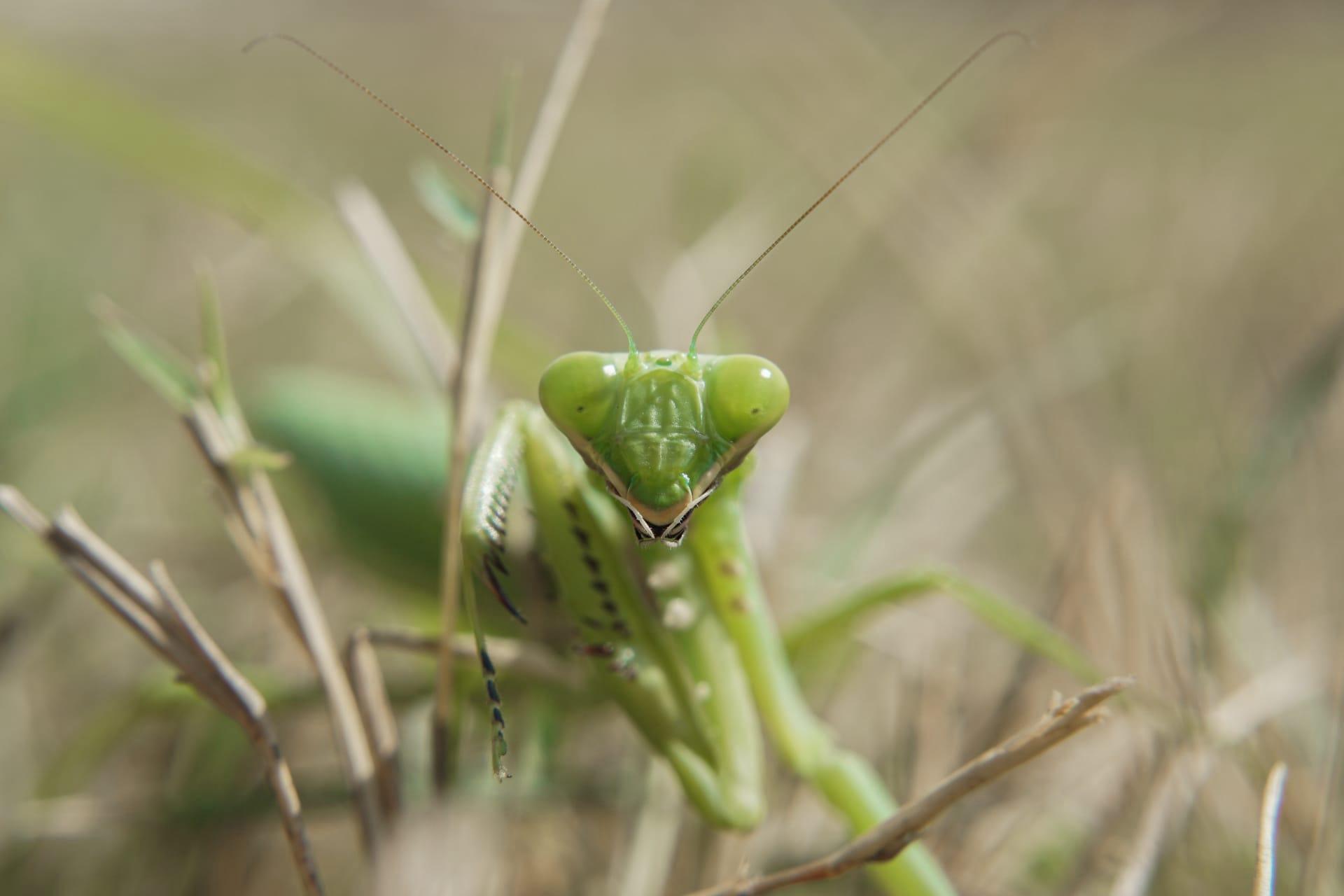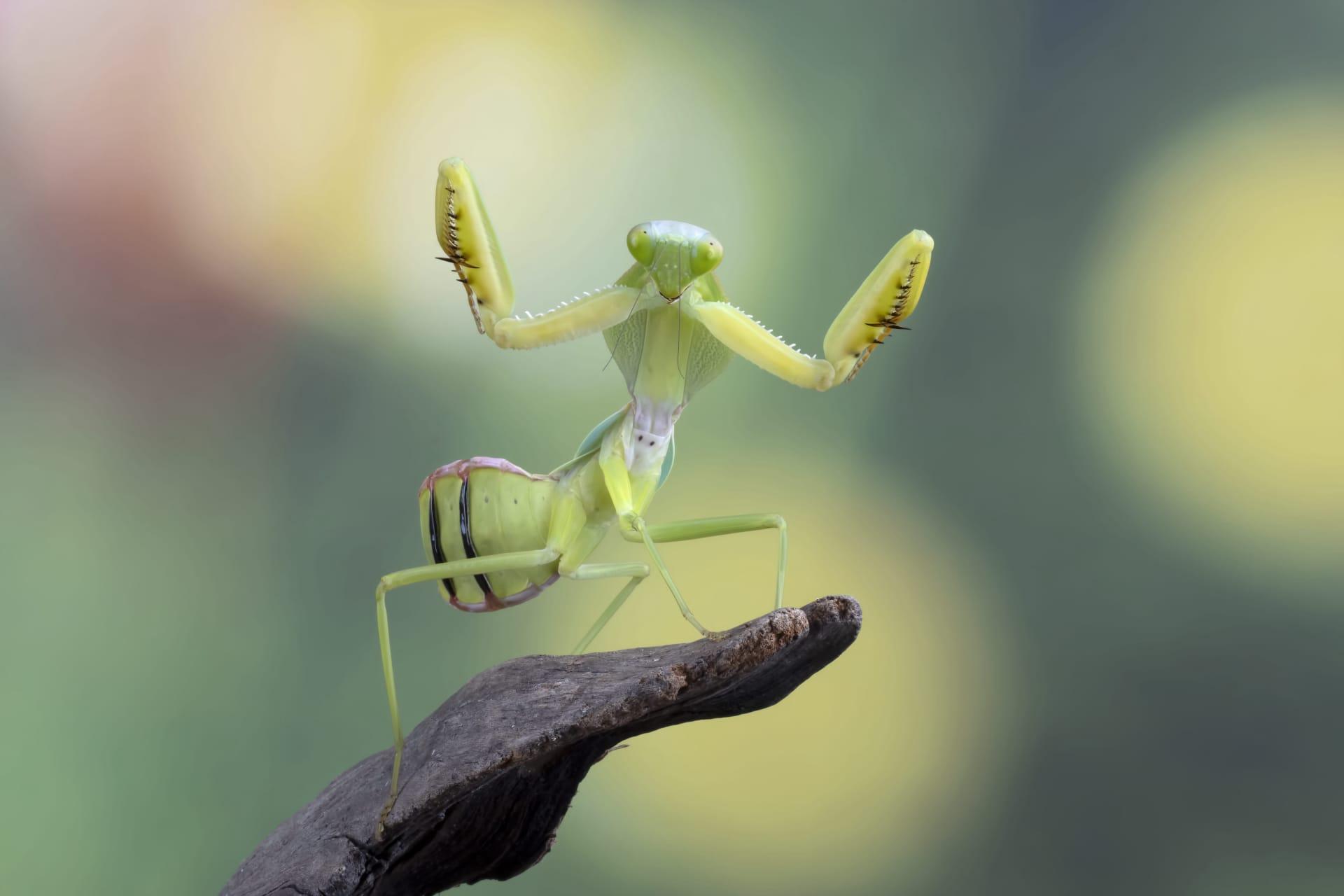Praying Mantis
- Home /
- Mini Encyclopedia /
- Animal /
- Praying Mantis
1
Praying Mantises, known scientifically as Mantodea, belong to a diverse group of over 2,400 species spread across 15 families. These insects are most recognized for their elongated bodies, triangular heads with bulging eyes, and their prominent front legs which are bent in a manner resembling prayer. Their coloration varies widely, from green to brown, aiding in camouflage within their natural environments. Unique among insects, their flexible neck allows them to rotate their heads 180 degrees to survey their surroundings.
Praying Mantises are predominantly found in tropical and subtropical regions, but they inhabit a variety of climates worldwide. They are widespread in Asia, Africa, and the Americas, with a few species in Europe and Australia. Their habitat ranges from rainforests to deserts, displaying remarkable adaptability. In the United States, they are commonly seen in gardens, meadows, and agricultural areas, playing a vital role in pest control.

2
Question: Do praying mantises always eat their mates?
Answer: This is a common misconception. While instances of sexual cannibalism do occur in some mantis species, it's not the norm. Studies suggest that this behavior happens in less than 30% of mating encounters. Factors like the female's hunger level and the environmental conditions play a significant role. In captivity, where females may be under more stress or less able to hunt, the rate of cannibalism can be higher. In the wild, however, males often escape after mating.

3
Praying Mantises employ a blend of stealth and precision in their survival strategy. They are ambush predators, renowned for their patience and ability to remain motionless for long periods. This allows them to blend into their surroundings and surprise their prey, which includes a wide range of insects and sometimes even small vertebrates. Their front legs, equipped with spikes, are lightning-fast, snatching prey in a fraction of a second.
Aside from their predatory prowess, mantises also have a fascinating defensive tactic. When threatened, some species stand tall, spread their forelimbs, and fan out their wings to appear larger and more intimidating. This display, often accompanied by rocking motions, can deter predators. Additionally, their ability to mimic plants and flowers not only aids in hunting but also in avoiding detection by predators.

4
In ecosystems, praying mantises play a dual role as both predators and prey. Their predation helps control populations of various insects, including pests harmful to agriculture and gardens. This makes them an important part of biological pest control strategies. By managing insect populations, they indirectly aid in the pollination process and the health of plants.
Praying Mantises also contribute to the food web as prey for larger animals. Birds, bats, spiders, and larger insects such as hornets are common predators of mantises. This predation helps maintain ecological balance, ensuring that mantis populations do not grow excessively and disrupt local ecosystems.

5
Film: "The Praying Mantis: Cloaked Predator," produced in the United Kingdom in 2017, is a captivating documentary. It delves into the mysterious world of praying mantises, showcasing their unique hunting methods, mating rituals, and the remarkable ability to camouflage. The film provides insightful commentary on the ecological impact of these fascinating creatures.
Book: "The World of the Praying Mantis," authored by Paul Erickson, was published in Canada in 1993. This book offers an in-depth look into the biology, behavior, and life cycle of praying mantises. It's praised for its detailed photographs and accessible writing, making it suitable for both enthusiasts and professionals.
Book: "Mantises: Under the Microscope," written by Michael Maxwell and published in the United States in 2010, provides a comprehensive scientific overview of mantis species, their physiology, and their role in the environment. The book is noted for its use of microscopic photography, bringing to light the intricate details of these insects' anatomy and behaviors.